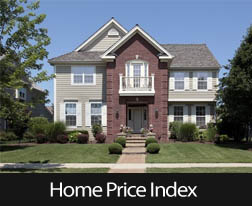
Home prices increased across the S&P Case Shiller 20-City Home Price Index in September. According to the 20-City Home Price Index, Year-over year home price gains increased to 5.50 percent from August’s reading of 5.10 percent. 17 cities posted higher year-over0year price gains in September as compared to August.
Western cities led price gains with San Francisco, California reclaiming its lead with a year-over-year gain of 11.20 percent in September. Denver, Colorado followed with a year-over-year gain of 10.90 percent and Portland, Oregon achieved the third highest year-over-year home price gain of 10.10 percent. Phoenix, Arizona had the longest consecutive run of year-over-year price gains for ten months and had a year-over-year gain of 5.30 percent.
Month-to Month Home Prices Indicate Stronger Housing Markets
After seasonal adjustment, the 20-City Home Price Index reported a month-to-month gain of 0.60 percent in September with home price gains in 19 cities. David M. Blitzer, Chairman of the S&P Indices Committee, said that home prices are growing at more than twice the rate of inflation. While this is good news for home sellers, it also means that home buyers are finding that home prices are rising faster than other economic sectors. Rising home prices present a challenge for first-time and moderate income home buyers. First-time buyers drive housing markets as their home purchases bring new demand into the market and allow current homeowners to move up to larger homes.
Mr. Blitzer also said that in spite of widespread media coverage of the Federal Reserve’s likely plan to raise its target federal funds rate from 0.00 to 0.250 percent to 0.25 to 0.50 percent in December, the increase in the federal funds rate should not cause an major rise in mortgage rates, which are expected to stay near 4.00 percent for a 30-year fixed rate mortgage.
Based on readings for national median income, median home price and average mortgage rates, Mr. Blitzer said that affordability for homeowners within the median income range who were buying median priced homes had “slipped recently.”
Year-end reports on housing markets and general economic conditions will likely cause adjustments to forecasts for home prices and affordability. Strong labor markets may improve affordability for home buyers and the actual impact of any Fed move to raise rates will influence housing markets and home prices in 2016.
 A number of economic reports released last week indicate mixed economic progress. The 20-City Home Price Index released by S&P Case Shiller showed that August home prices rose, but New Home Sales dropped in September. The Federal Open Market Committee of the Federal Reserve indicated that it may reserve the target federal funds range at its next meeting in December.
A number of economic reports released last week indicate mixed economic progress. The 20-City Home Price Index released by S&P Case Shiller showed that August home prices rose, but New Home Sales dropped in September. The Federal Open Market Committee of the Federal Reserve indicated that it may reserve the target federal funds range at its next meeting in December. According to the Case-Shiller 20-City Home Price Index, U.S. home prices increased by 0.40 percent in August, which boosted year-over-year home price growth to 5.10 percent. Denver, Colorado continued to lead in home price gains with a monthly increase of 0.90 percent and a year-over-year gain of 10.70 percent. San Francisco, California also posted a year-over-year gain of 10.70 percent, but posted a month-to-month loss of -0.10 percent. Portland, Oregon posted a year-over-year gain of 9.40 percent with a month-to-month gain of 1.10 percent.
According to the Case-Shiller 20-City Home Price Index, U.S. home prices increased by 0.40 percent in August, which boosted year-over-year home price growth to 5.10 percent. Denver, Colorado continued to lead in home price gains with a monthly increase of 0.90 percent and a year-over-year gain of 10.70 percent. San Francisco, California also posted a year-over-year gain of 10.70 percent, but posted a month-to-month loss of -0.10 percent. Portland, Oregon posted a year-over-year gain of 9.40 percent with a month-to-month gain of 1.10 percent. Last week’s economic reports included Pending Home Sales, Construction Spending and several reports on jobs and employment. The details:
Last week’s economic reports included Pending Home Sales, Construction Spending and several reports on jobs and employment. The details: U.S. home prices rose by 0.10 percent in July according to the S&P Case-Shiller Housing Market Index. San Francisco, California edged past Denver Colorado with a year-over-year price increase of 10.40 percent as compared to Denver’s reading of 10.30 percent. All year-over-readings for the 20-City Home Price Index posted gains, but Washington, D.C. showed the lowest year-over0-year growth rate at 1.70 percent. Chicago, Illinois and New York City followed closely with year-over-year readings of 1.80 percent and 1.90 percent respectively.
U.S. home prices rose by 0.10 percent in July according to the S&P Case-Shiller Housing Market Index. San Francisco, California edged past Denver Colorado with a year-over-year price increase of 10.40 percent as compared to Denver’s reading of 10.30 percent. All year-over-readings for the 20-City Home Price Index posted gains, but Washington, D.C. showed the lowest year-over0-year growth rate at 1.70 percent. Chicago, Illinois and New York City followed closely with year-over-year readings of 1.80 percent and 1.90 percent respectively. Denver, Colorado continues to woo homebuyers as home prices rose by 10.20 percent as of June according to the Case-Shiller 20-City Home Price Index. The Mile-High City was the only city included in the index that posted double-digit year-over-year growth in June. San Francisco, California posted a 9.50 percent year-over-year gain in home prices and Dallas, Texas rounds out the top three cities posting highest year-over-year home price growth with a reading of 8.20 percent.
Denver, Colorado continues to woo homebuyers as home prices rose by 10.20 percent as of June according to the Case-Shiller 20-City Home Price Index. The Mile-High City was the only city included in the index that posted double-digit year-over-year growth in June. San Francisco, California posted a 9.50 percent year-over-year gain in home prices and Dallas, Texas rounds out the top three cities posting highest year-over-year home price growth with a reading of 8.20 percent. Last week’s economic events included a number of readings on housing related topics. The National Association of Home Builders released its report on builder confidence in housing markets, Housing starts reached their highest level since the great recession, and existing home sales exceeded expectations and the prior month’s reading. The Federal Reserve released minutes for its most recent FOMC meeting, which indicated that while a majority of FOMC members are leaning toward raising the Fed’s target federal funds rate, concerns over certain aspects of the economy continue to keep the Fed from citing a date for raising its target interest rate.
Last week’s economic events included a number of readings on housing related topics. The National Association of Home Builders released its report on builder confidence in housing markets, Housing starts reached their highest level since the great recession, and existing home sales exceeded expectations and the prior month’s reading. The Federal Reserve released minutes for its most recent FOMC meeting, which indicated that while a majority of FOMC members are leaning toward raising the Fed’s target federal funds rate, concerns over certain aspects of the economy continue to keep the Fed from citing a date for raising its target interest rate. Last week’s scheduled economic reports included the Case-Shiller 20 and 20-City Index reports, pending home sales data released by the National Association of Realtors® and the scheduled post-meeting statement of the Federal Reserve’s Federal Open Market Committee.
Last week’s scheduled economic reports included the Case-Shiller 20 and 20-City Index reports, pending home sales data released by the National Association of Realtors® and the scheduled post-meeting statement of the Federal Reserve’s Federal Open Market Committee.